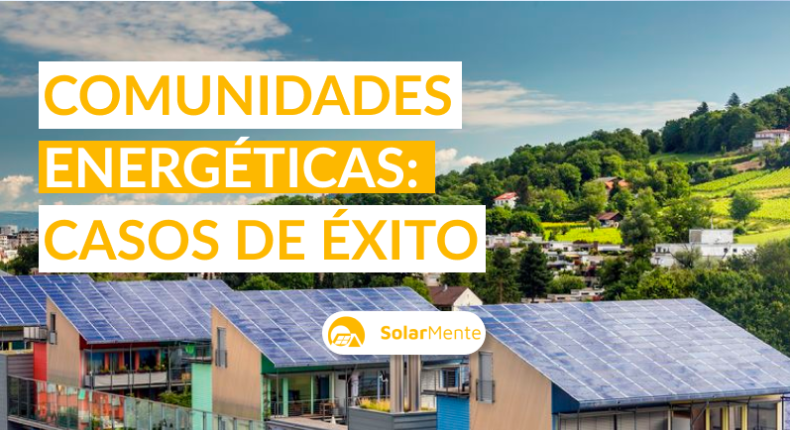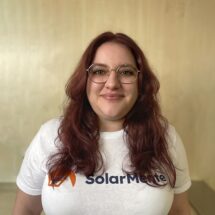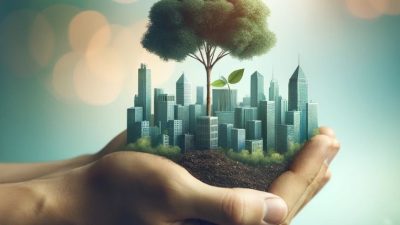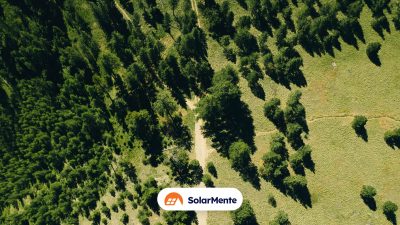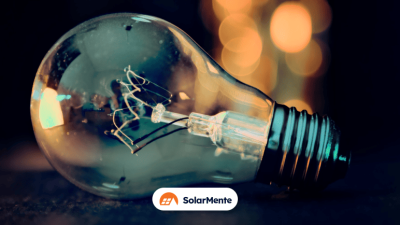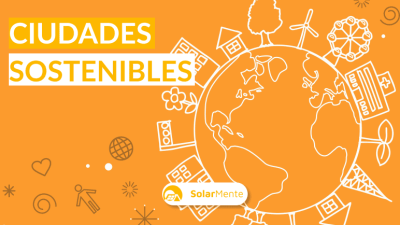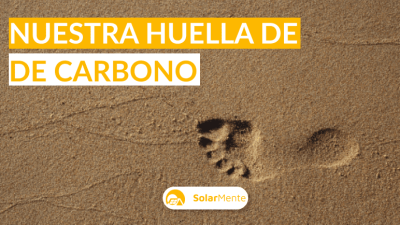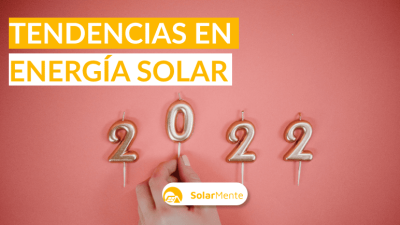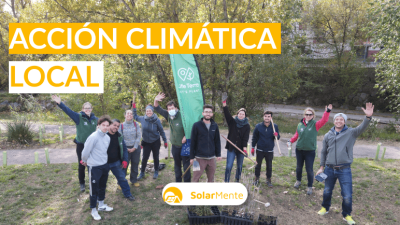Perhaps the concept of self-consumption was unknown five years ago, but today, it is no longer a utopia.
Households and businesses are adopting this technology to reduce high electricity bill costs while avoiding air pollution.
But it is also a term that has evolved and created new ways of generating and sharing energy. And this is how energy communities came about .
A method of collective self-consumption where people benefit from the energy produced on their behalf, such as neighbourhoods, businesses and industries.
In this article we show you successful cases of energy communities in Europe and Spain.
Success stories of energy communities in Europe
Energy community Freiburg in Germany
Among the best known examples worldwide is the Vauban energy community in Freiburg, Germany.
The city has an installation of 445 kW of photovoltaic energy, which produces four times the amount of energy that the city’s residents use in a year.
In this way, it is possible to avoid the consumption of up to 200,000 litres of oil and to prevent up to 500 tonnes of carbon dioxide (CO2) from entering the atmosphere in a year. This, together with the great economic and productive benefits they generate for all members of the community.
In addition, sustainable materials are used in the construction. The residents use a car sharing system, although it is mainly possible to get around on foot or by bicycle. The latter two modes of transport are more sustainable.
Courlans energy community in France
The photovoltaic installation is located on the roof of a merry-go-round at the equestrian centre “La Jument Verte” in Courlans.
Installed in 2011, the plant was taken over by Jurascic in June 2017 and is now owned by citizens of its territory, contributing to a local and solidarity-based economy. It has an installed power of 108.3 kWp.
UK success story: Brixton Energy Community
Brixton Energy Solar 1 is the first co-operatively owned renewable energy project in the city centre, on a social housing estate. The project involved the installation of a 37.24 kWp solar power station on the roof of Elmore House on the Loughborough Estate in Brixton, London.
Sonyachne Misto Energy Community (Ukraine)
50 kilometres east of Chernobyl in the Ukraine lies the town of Slavutych.
It is a young town, founded to relocate the inhabitants of Pripyat, mostly nuclear power plant workers, after the accident and evacuation of the site in 1986.
Today, Slavutych is also known as Sonyachne Misto, solar village. One of the many energy communities that have sprung up in Europe in recent years has taken shape in its streets.
It now has 97 members who own three solar parks. Each person starts with an investment of at least 500 euros, and for every 1,000 euros invested, there is an annual return of around 130 euros until 2030. This makes the investment attractive to a wide range of people.
Success stories of energy communities in Spain
Crevillent: Spain’s first local energy community
Crevillent’s electricity cooperative, Grupo Enercoop, set out to harness the infinite indigenous resource of the sun and turn Crevillent into a local energy community of reference in Spain and Europe.
In collaboration with the City Council and with the support of the Generalitat Valenciana and the IDAE, the Crevillent CEL project is called Comptem, short for Community for Municipal Energy Transition.
The aim is to promote self-consumption of electricity through collective photovoltaic installations located in public spaces and on the roofs of blocks of flats or industrial buildings.
Success story in Navarre: Esparza de Galar energy community
This is the first energy community that, following the characteristics established by the European Directive on the promotion of the use of energy from renewable sources, has gone from being a project to a reality in Navarre.
The photovoltaic generation installation located on the roof of the pelota court in Esparza, with an installed power of 18 Kwp, is expected to produce 25,588 kWh/year and avoid the emission of 15.4 tonnes of CO2.
The Council, the EMASP electricity supply cooperative, the people who live in the town and interested companies in Esparza with electricity consumption points are taking part in a voluntary and open participation process.
Urroz Villa energy community in Navarra
Work has already begun on a project which, through the self-consumption of renewable energy, can achieve a saving of 54% on the overall bill and contribute to caring for the planet by avoiding the annual emission of more than 26 tonnes of CO2.
Its commitment to self-consumption of solar energy with the installation of 90 photovoltaic panels in the town to supply electricity to the village.
The power is 36 kW and it is estimated that it will generate a total of 42,000 kWh of energy per year. Thirty-four percent of this energy will be used for the town hall, which houses the doctor’s surgery, the pharmacy, the pensioners’ club, the cultural centre and the headquarters of the Izaga Association of Municipalities, as well as for the school.
The surplus will be fed into the grid for the community’s own consumption. The whole neighbourhood is called upon to benefit from it.
Successful case in Alava: Lasierra energy community
The town of Lasierra in Alava is the first place in the Basque Country to set up a local energy community in accordance with the characteristics established by the European Directive on the promotion of the use of renewable energies.
The installation, with a power of 30 kW, consists of 76 photovoltaic panels that are planted on the roof of the water pumping centre and has been used to provide the village with canopies in the public car park.
Amarita energy community (Álava)
Neighbours and the Administrative Board of the Council decided to be active agents in tackling Climate Change by opting for Kilometre 0 renewable energy self-consumption.
To achieve this, they are going to equip themselves with a photovoltaic installation with a nominal power of 20 kWp, which will be operational in the coming months, with which they plan to achieve a self-consumption of 41%.
With this photovoltaic generation capacity, the annual emission of 10 tonnes of CO2 and 30.08 mg of radioactive waste will be avoided.
Ollavarre energy community (Álava)
With the photovoltaic installation of 47 kWp nominal power, which will be operational in the coming months, the Olabarri-Ollavarre Local Energy Community plans to achieve 43% self-consumption.
The annual emission of 27.4 tonnes of CO2 and 78.5 mg of radioactive waste will be avoided.
Castillo, Manurga and Trespuentes energy communities in Álava
Councils such as Manurga and Trespuentes, among others, are demonstrating that it is possible to generate and consume renewable energy from Km0, managed in a social and democratic way, with small installations and with minimal impact on the occupation of the territory.
The Administrative Board of the towns in Alava has launched the process to set up local energy communities to generate renewable electricity for self-consumption, following the characteristics established by the European Directive on the promotion of the use of energy from renewable sources.
Success story in Tenerife: energy community San Cristóbal de la Laguna
The Department of the Environment and the Fight against Climate Change of the City Council of La Laguna has promoted a pilot project to facilitate and support the creation of several energy communities in the municipality.
To this end, a service has been contracted, which will last until the end of this year, to promote the implementation of the project. Its municipal corporation has made a strong commitment to achieve 30% renewable energy consumption.
Energy communities: SolarMente and Las Rozas
As winners of the 1st Prize in the Hackathon Blockchain competition of Las Rozas Innova, thanks to our proposed project for blockchain technology to help in the field of energy, Las Rozas demonstrates its open-minded and forward-looking will in the creation of an energy community.
With our proposal, we seek to enable the community’s neighbours to share their surplus clean energy with each other by exchanging energy using blockchain, i.e. through energy transactions without the interference of any intermediaries (such as Endesa).
Although this project will require more flexible regulations around shared self-consumption, only projects like this will force a positive change and empower homeowners to own, store and distribute their own clean energy.
Through our solar calculator, you send us your monthly consumption and we will offer you the most suitable solar kit for you.

